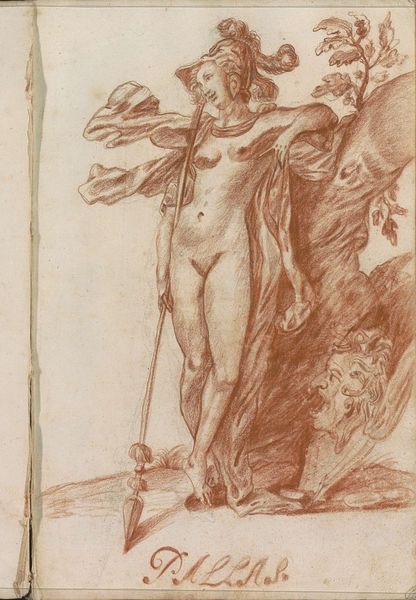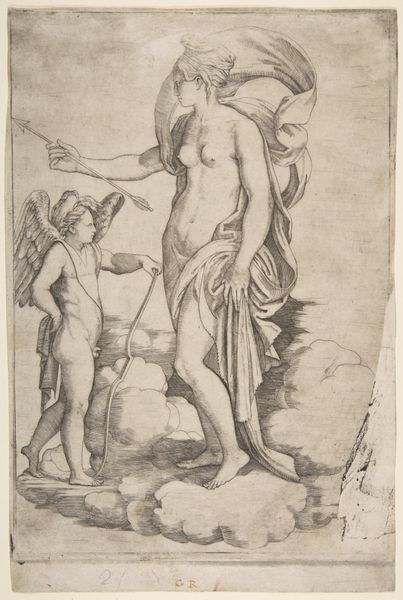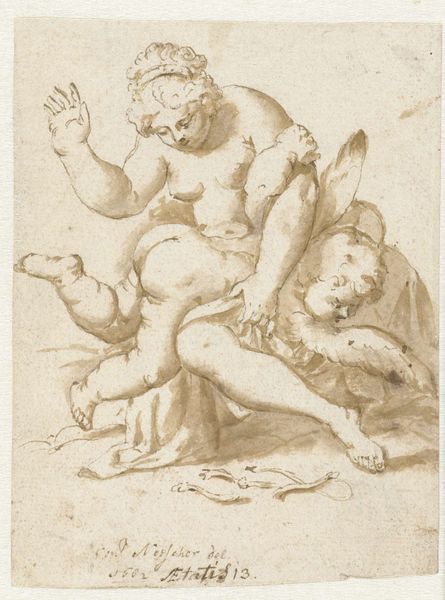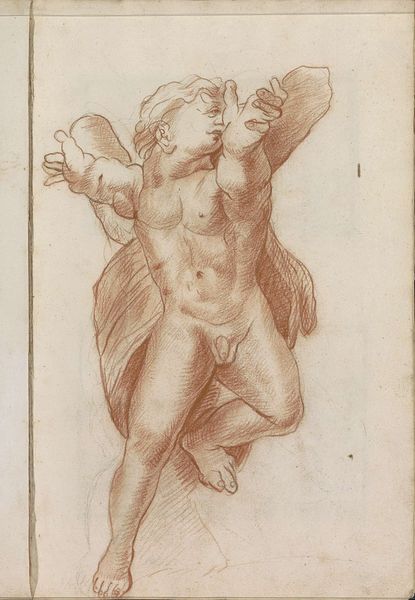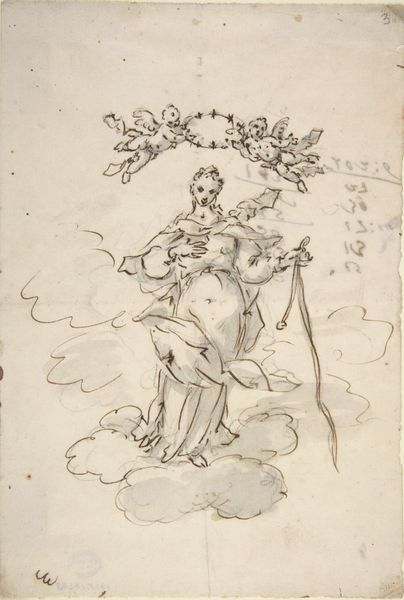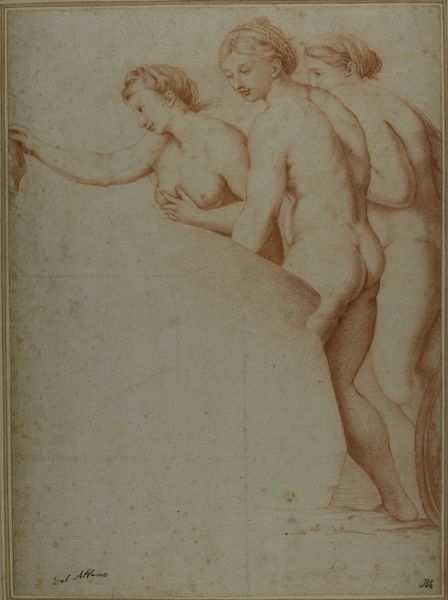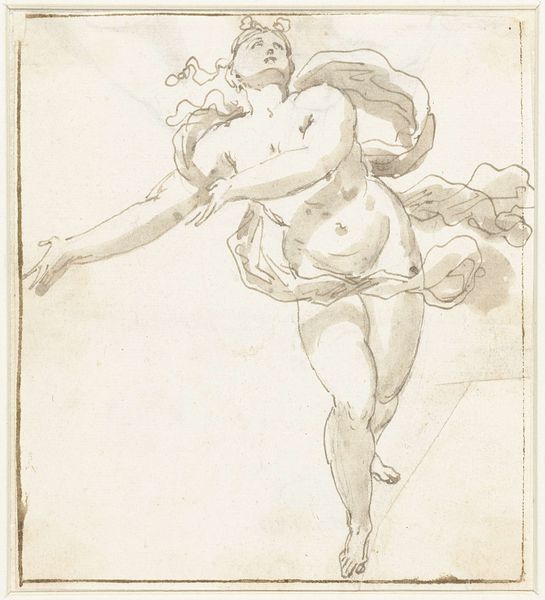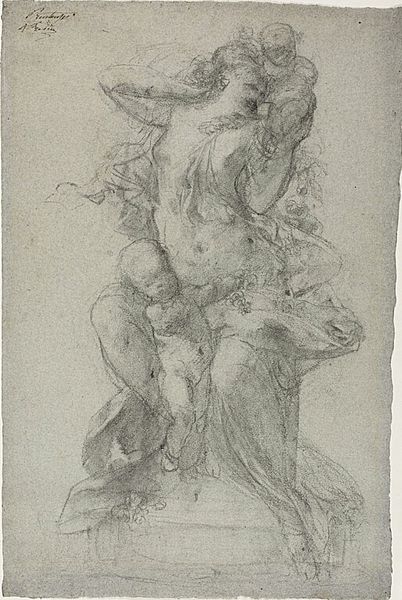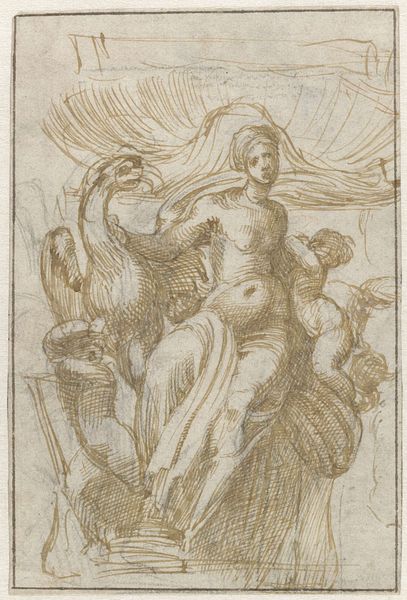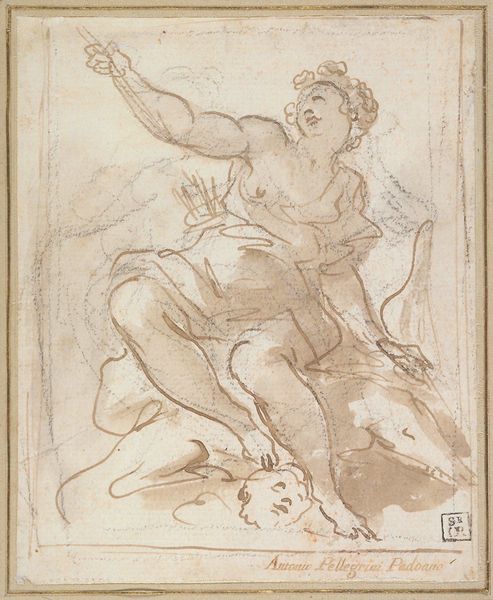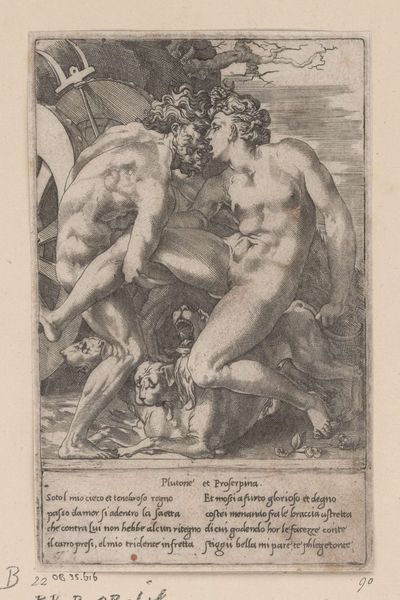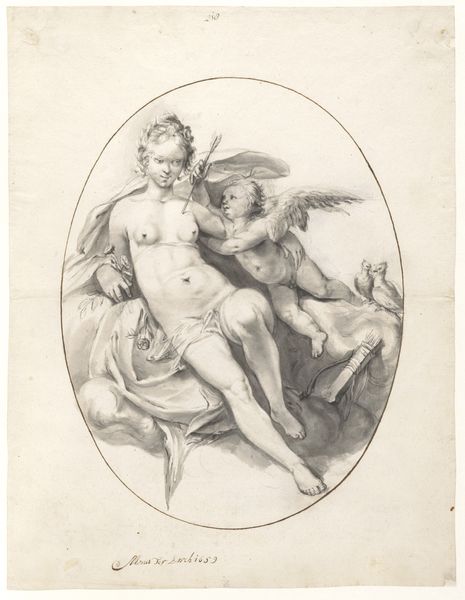
drawing, paper, pencil
#
portrait
#
drawing
#
allegory
#
baroque
#
pencil sketch
#
paper
#
pencil drawing
#
coloured pencil
#
pencil
#
history-painting
#
watercolor
Copyright: Rijks Museum: Open Domain
Editor: Here we have "Venus en Cupido," a drawing rendered in pencil, created in 1696 by Hendrick van Beaumont. It’s a sepia toned rendering; seeing this as a drawing, rather than painting, adds an immediacy that feels more intimate than grandiose. What do you notice first about this artwork? Curator: What immediately strikes me is how this drawing participates in the visual culture of its time. The idealized depiction of Venus, a celebrated subject of the Baroque period, tells us a lot about the role of art. How does this representation of feminine beauty conform to or diverge from contemporary standards? Editor: That’s a great point. I guess I hadn’t really thought about how much cultural ideals dictate what's even considered beautiful. In terms of divergences, I am especially thinking about her stance. Curator: Exactly, consider the political dimensions, and the patrons funding the image. How does that dynamic between artist, patron and societal standard shape this representation? Is she vulnerable or powerful? Editor: Good question. There’s definitely a contrast between her seemingly vulnerable nakedness, but powerful confidence in her posture. But thinking about what you brought up, what do the Cupid figure and other motifs represent to the cultural and political elites viewing this artwork? Curator: The bow and arrow could represent the tools of love and desire, ideas deeply embedded in mythology but equally present in the culture, too. Considering this drawing circulated within elite circles, what societal values were being reinforced? Did images like these solely reflect societal norms, or did they also help shape them? Editor: That's fascinating. It is clear that the artwork served multiple functions: as an object of aesthetic enjoyment and cultural value as well. I am walking away thinking so much about what this period considered ideal. Curator: Indeed! Recognizing the social functions of art lets us analyze how art operates in the world, as both a product and a producer of culture.
Comments
No comments
Be the first to comment and join the conversation on the ultimate creative platform.
